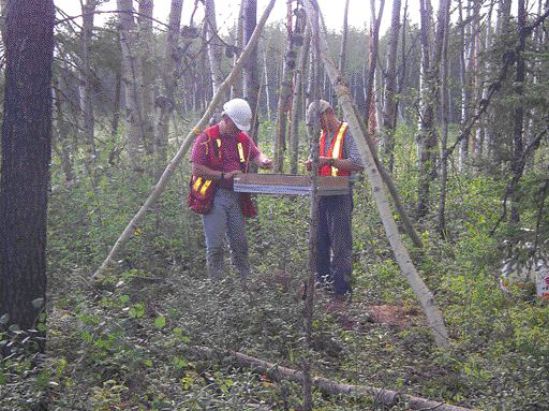Clues about how our ancestors lived can be found in many parts of the world, including the areas of northern Alberta that are marked for oilsands extraction. Various levels of government, the archaeological community and involved First Nations want to be sure that accessing this valuable energy resource does not destroy important archaeological resources.
Companies operating in the oilsands need to understand the issues involved in protecting archaeological resources. They can go a step further so that their activities help us understand more about early life in Canada, and build bridges of understanding with the First Nations whose ancestors have lived on this land for millennia.
Archaeological resources in Alberta are governed under the province’s Historical Resources Act, which is administered by the cultural facilities and historical resources division of Alberta Community Development (ACD). ACD’s mandate is to preserve, protect and present Alberta’s cultural and natural history.
Archaeological resources vary and can include tools such as projectile points or arrowheads, scraping and cutting tools, stone flakes (the remains of tool making), campsites, quarries, and areas of intense cultural activity. In muskeg country, such as that overlying the oilsands, acidic soils mean that organic materials tend to decay quickly, and are rarely found.
Archaeologists making recommendations about archaeological resources in a specific piece of land will generally begin by studying the provincial database of known sites in Alberta. The next step is to examine topographic maps, air photos and satellite imagery to look for areas of high potential for the identification of archaeological sites. Soils, vegetation communities with stands of trees such as Jackpine, the confluence of rivers, lakes and rivers with defined shorelines and banks are all good indicators of areas that would attract human use. Identifying areas of high potential for archaeological sites is important because it helps focus field investigations, thereby saving time and money.
A permit application to conduct a Historical Resources Impact Assessment (HRIA) must be submitted to ACD and approved prior to fieldwork. The permit is issued to an archaeologist responsible for conducting the investigations and submitting the required reports to ACD.
A helicopter overflight is a good way to confirm that the understanding gained from desktop studies is actually borne out on the ground.
When a site is discovered in the area of interest, more detailed study is conducted to determine the significance of the site, on which recommendations for mitigation are based. The amount of study required, including the size of area that must be investigated, is decided by ACD.
It could be that the site is valuable enough that it should be protected from development. In other cases, investigation using accepted techniques might find no archaeological sites to protect, possibly indicating that development can go ahead.
Mitigating damage
If archaeological resources are found, it is possible to mitigate damage by avoiding the site, or in other cases by the removal, analysis, cataloguing and storage of any artifacts recovered there.
Because of the sheer amount of land involved in the oilsands, protection of archaeological sites is a whole different game from that involved in smaller projects common in Alberta, such as the well-pad for a single oil well that might cover a few hundred square metres. Oilsands development, measured in hundreds of square kilometres, is much more likely to affect archaeological resources. This means that companies working in the oilsands need to pay particularly close attention to finding and protecting archaeological resources.
One of the keys to success in this is the involvement of First Nations people. In some cases, this is required — by the First Nations, regulators and/or the developer. Involvement can include participation of First Nations, community consultation, and completion of traditional knowledge studies. People with a sound grasp of local traditional knowledge can often make a valuable contribution to the search for archaeological resources by indicating where longstanding land uses might mirror earlier areas of human activity.
First Nations often provide a member to work as part of the team, as this gives them a greater understanding of their own past and the methods now used by archaeologists to collect archaeological data — and it provides a degree of certainty that any artifacts will be treated with respect and care. This means that preservation of archaeological sites and resources can become an opportunity for resource companies to develop better relations with First Nations and community stakeholders.
Resource companies looking for counsel in archaeological matters should approach Alberta Community Development (www.cd.gov.ab.ca) for a list of qualified archaeological consultants. It may be best to find a service provider that can provide the full range of cultural and environmental solutions to support the proponent’s company through the whole process, including support to regulatory hearings and expert witness testimony if necessary.
— David Blower is a senior archaeologist in the Calgary office of Golder Associates. His work deals with impact assessment inventory and mitigation of cultural resources. He and the Golder team of archaeologists and anthropologists are involved in numerous development and EIA-related projects in the Oilsands region. He can be reached at dblower@golder.com.


Be the first to comment on "Uncovering the past, gently, in the oilsands"